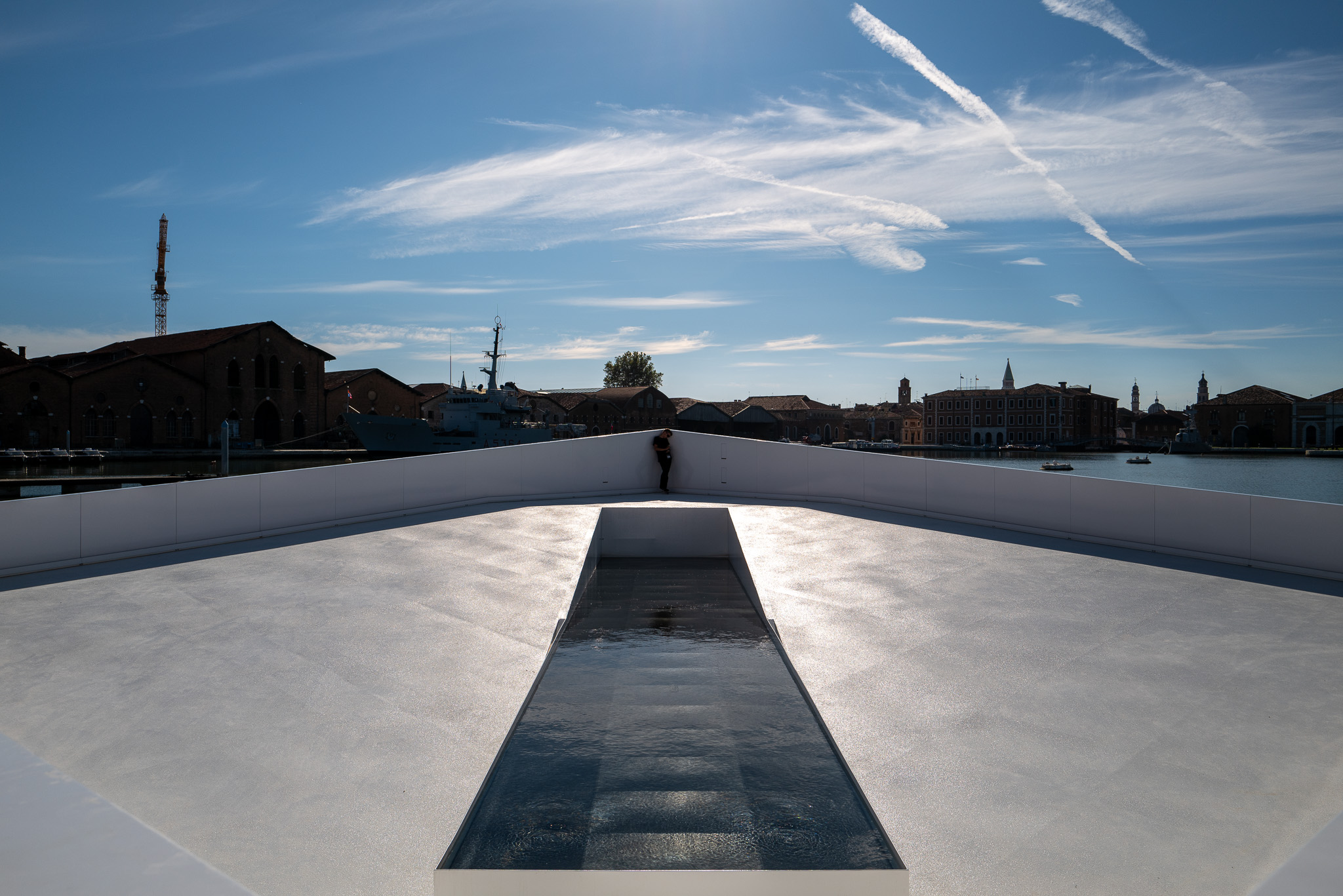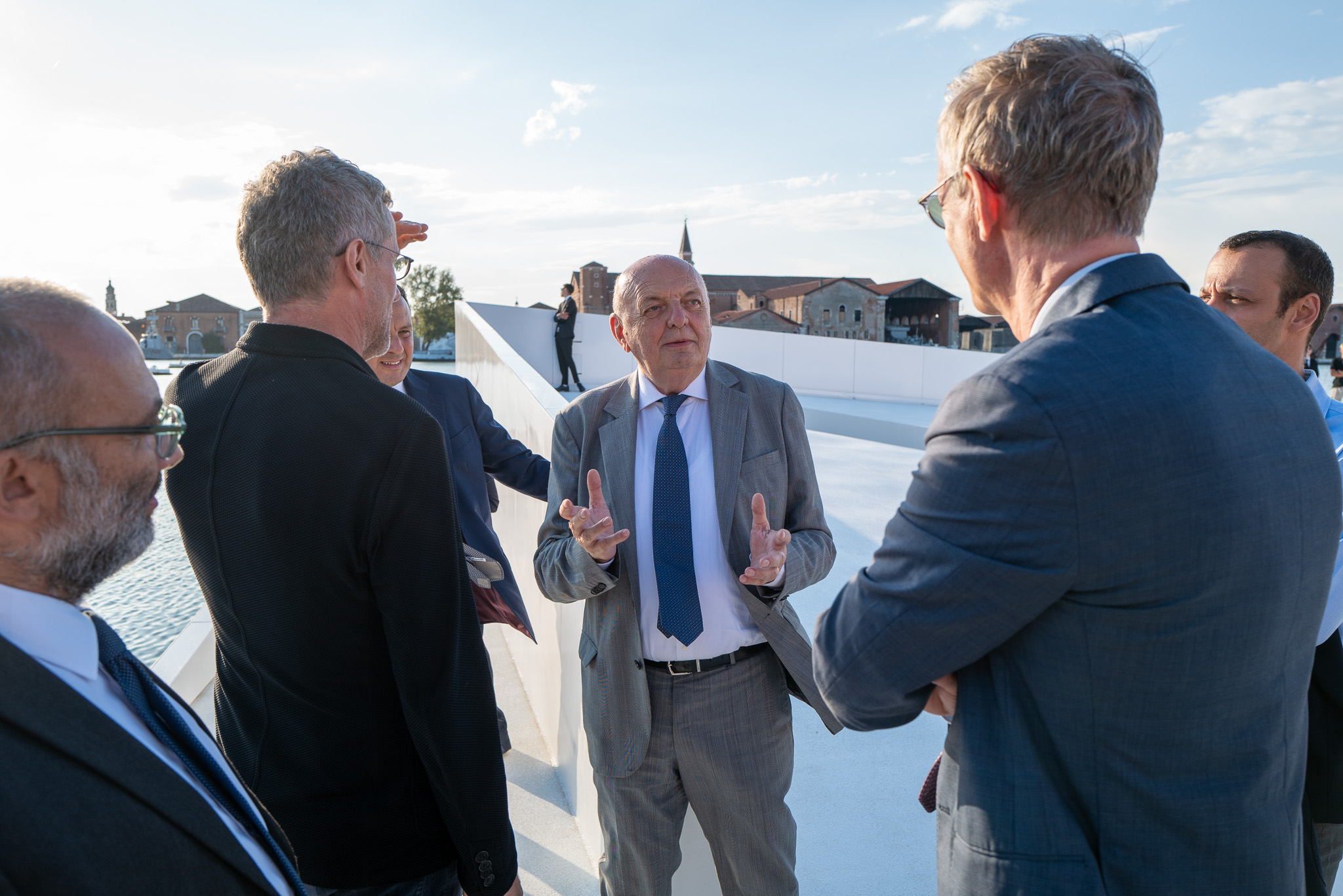
C4C is proud to support AquaPraça, a visually striking floating plaza that will make its way across the Atlantic Ocean to South America. Presented by Italy’s Ministry of Environment and Energy Security and Ministry of Foreign Affairs and International Cooperation in collaboration with an alliance of public-private partners including Bloomberg Philantropies, C4C, CIHEAM BARI, BF International Limited, ENEL, and Ferrovie dello Stato Italiane, the geometric structure, designed by Carlo Ratti Associati and Höweler+Yoon Architecture, made its debut at the Venice Biennale of Architecture and will soon journey to Belém, Brazil to take its place as an integral part of the Italian Pavilion at COP30 this November.
Conceived as a gathering space for constructive conversation around climate and environmental issues, AquaPraça was engineered to respond dynamically to changing sea levels, making constant, subtle movements to maintain its delicate equilibrium with the surrounding water. The 400-square-meter plaza thereby illustrates the potential of architecture to harmonize seamlessly with the natural world, and more broadly for humanity to arrive at a symbiotic relationship with the planet we all share.

The AquaPraça floating plaza exhibits symmetry and harmony with nature.
“The concept of a floating forum is truly innovative and aligns perfectly with our vision for COP30,” says Andre Corrêa do Lago, President of COP30. “Bringing this structure to Brazil would create a striking and symbolic presence at the conference, highlighting our commitment to sustainability. Moreover, it could serve as a lasting legacy of our joint efforts and a continuous reminder of the importance of sustainability.”
At the COP, AquaPraça, constructed by leading Italian steel company Cimolai within a span of five months, will also represent Italian ingenuity and rigor in engineering. “In 1979, Aldo Rossi launched the Teatro del Mondo at the first Biennale Architettura, positing that architecture could engage with the past. Today, AquaPraça shows how architecture can engage with the future — by responding to climate and engaging with nature rather than resisting it,” says Carlo Ratti, professor at MIT and the Politecnico di Milano, co-founder of Carlo Ratti Associati, and director of this year’s Biennale of Architecture.

Italy's Minister of the Environment and Energy Security, Gilberto Pichetto Fratin, aboard AquaPraça.
Following the conclusion of COP30, the “lasting legacy” do Lago spoke of will be assured, as Italy will donate AquaPraça to Brazil, where it will endure as a one-of-a-kind forum for those looking to meditate on and discuss their relationship with the planet. As Italy’s Minister of the Environment and Energy Security, Gilberto Pichetto Fratin, said, “We are approaching COP30 with a sincere desire to make our contribution — grounded in expertise and a scientific approach, but also in humanity and listening. We want to be promoters of real change, capable of inspiring other countries, communities, and generations to join in the crucial challenge of our time.”
All photographs by Kaia Rose, Connect4Climate.



